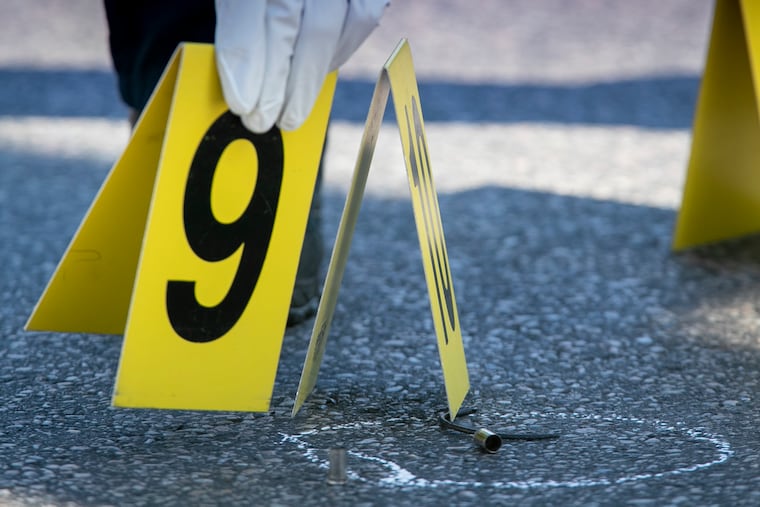We can’t arrest our way out of Philly’s gun violence crisis | Opinion
Insights from people on the ground offer a glimpse of what successful anti-violence strategies might look like.

In 2020, there were four victims of shootings in the Philadelphia Police Department’s 5th District, which includes the affluent, majority-white neighborhoods of Roxborough and Manayunk. Just a few miles away in the 14th District, which includes the low-income, majority-Black neighborhood of Germantown, there were 121 victims of shootings. That disparity is not new: In 2018, the 14th District had 20 times the number of shooting victims than the 5th. In 2016, there were 80 shooting victims in the 14th and none in the 5th.
We know that proactive policing policies like stop-and-frisk, which sometimes yields unlicensed or unregistered guns, are not the reason shootings have remained so low in Chestnut Hill — because the same policies have consistently failed to make shootings also rare in Germantown.
Instead, throughout Philadelphia and cities nationwide, generations of low-income Black and Latino residents have lived and died in communities that have been reduced to symbols in the public imagination — the South Bronx, Compton, South Side of Chicago — as we mistake failed policies for failed people and resign ourselves to the idea that certain types of places and people are just inherently dangerous.
» READ MORE: 10 ideas to stem the tide of Philly’s gun-violence crisis | Opinion
The premise that certain types of places and people are not redeemable inevitably leads to the conclusion that we are all better off without them. That premise is admittedly appealing to some — it led to the mass incarceration crisis, after all — but it is also belied by decades of data.
For much of the last 30 years, Philadelphia has had one of the highest homicide rates among large U.S. cities, even in periods when violent crime overall was going down. In the 1990s, when homicides were at their peak, the Philadelphia Police Department had a median annual clearance rate of 73%, and the incarceration rate for Philadelphians aged 15-64 increased 82%. Yet, the number of homicides each year remained above 400 until 1998.
More arrests, more convictions, and more prisons did not add up to fewer shootings. This has not stopped some from demanding that we implement this same strategy with the promise it will somehow yield a different result. Instead, we should listen to the people who are closest to the violence to understand its root causes.
In interviews with both reporters and academics, young men in those areas where gun violence has spiked have reported they do not feel police are able or willing to protect them, and so they have no choice but to protect themselves and their loved ones. Community leaders who serve as mentors and violence interrupters have explained the need for young men with limited options for employment or education to find other ways to gain the respect of their peers. Social service providers have discussed the unmet needs of people struggling with trauma, mental illness, and substance use issues.
Insights from people on the ground offer a glimpse of what successful anti-violence strategies might look like. At minimum, cities would offer mental health and financial supports to victims and witnesses of violence. Restorative justice and conflict resolution programs would give young people the tools to take responsibility for their mistakes, to forgive, and to heal. Real anti-violence interventions would protect small children from lead exposure and offer young adults employment and education programs that promise something more than a lifetime of unstable underemployment. Most importantly, society would give young people the space to make mistakes without facing life-altering consequences.
» READ MORE: ‘Their lives were snatched away’: My family’s struggle after losing two members to gun violence | Opinion
These strategies are not as simple or easily turned into slogans as calls for a return to mass incarceration. But effective strategies are rarely simple. If we are serious about reversing Philadelphia’s decades-long struggle with gun violence, we must listen to the young men at the center of the crisis and provide sustained funding and support for the organizations and providers that meet them where they live. Community-based organizations and social service providers are already doing what they can to offer the young people of Germantown something those of Chestnut Hill have been allowed to take for granted: elders who believe they are worth the time and effort it takes to make them safe.
Michele Kilpatrick works in the Philadelphia District Attorney’s Transparency Analytics (DATA) Lab. michele.kilpatrick@phila.gov